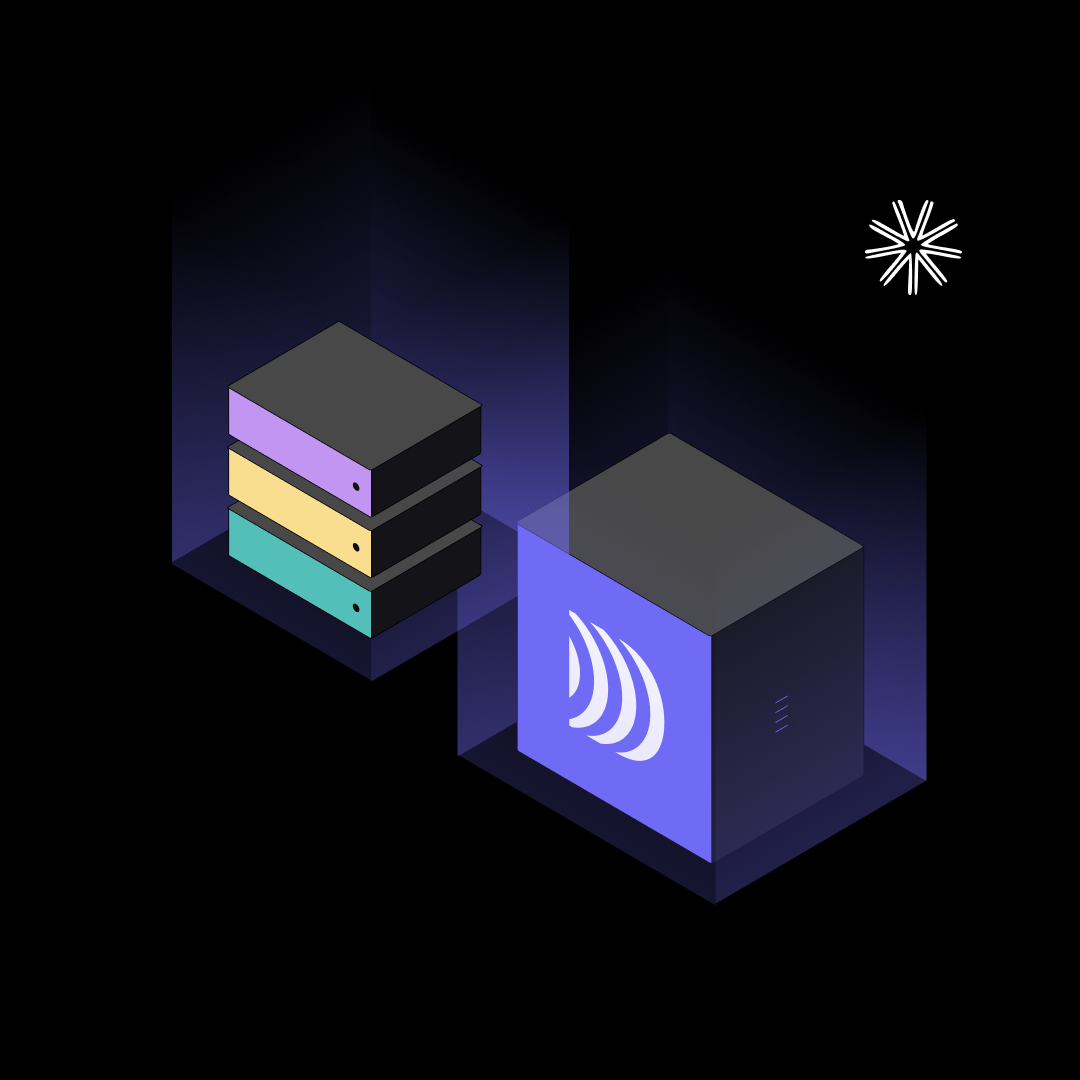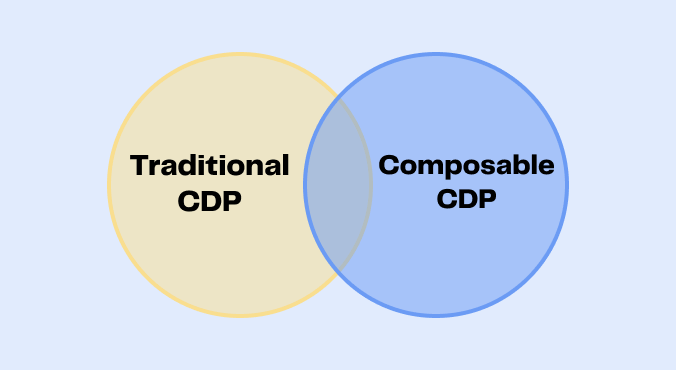
Comparative guide between Composable CDP and Integrated CDP
7min • Last updated on Jun 12, 2025

Alexandra Augusti
Chief of Staff
Customer Data Platforms (CDPs) have been part of the data marketing ecosystem for some twenty years. They enable companies to collect, store and leverage their customer data.
The emergence of Composable CDPs in 2021 is redefining the landscape by offering an alternative to traditional solutions.
In this article, find out more about their differences so you can choose the solution best suited to your needs.
Things to remember:
A traditional CDP is an all-in-one platform that centralises, organises and activates customer data in a pre-configured system. This is also known as an integrated CDP or packaged CDP.
In contrast, a composable CDP uses the existing data infrastructure to collect, organise and activate customer data in a flexible way. This is also known as a modular CDP.
Although they serve the same purpose, these two solutions offer very different technical approaches.
They also differ in terms of cost and implementation time.
👉🏼 Definition, operation, prerequisites, pricing and implementation: this article gives you a clear overview of the components of a Customer Data Platform.
Everything you need to compare integrated and composable CDPs.
Definition of traditional CDPs
A Packaged CDP is a ready-to-use platform that offers predefined and standard functions for collecting and storing data from different sources.
It enables this data to be transformed and aggregated in order to build audiences and send them to marketing destinations.
A traditional CDP can also guarantee data quality, ensure governance protocols and comply with privacy regulations.
This implies several things:
A traditional CDP stores the data it collects to unify profiles (ID resolution). This means that your customer data is stored and therefore duplicated in a third-party tool.
Its functions are predefined and generally sold in blocks. You can buy package by package, but this implies an additional cost each time.
An integrated CDP is a pre-configured platform designed for the majority of businesses. It may therefore lack customisation and scalability.
🤔 What about a Composable CDP?
Definition of composable CDPs
A Composable CDP is a modular solution that collects, models, and activates customer data from your existing data infrastructure.
It relies on a set of tools (open-source or software) to perform some or all of the functionalities of a traditional CDP: collecting, storing, and activating customer data.
Several points are worth highlighting:
A Composable CDP does not need to include all the functionality of a traditional CDP. It only offers the modules required to meet the company's needs at a given time.
Its modular structure means that a ‘CDP strategy’ can be started quickly. The first use cases can be implemented in a few days, or even a few hours. Then the project can evolve progressively.
It is based on the assembly of tools dedicated to specific functions: collection, storage, activation, etc. This approach enables seamless integration with your existing data environment, without the need to replace your existing tools.
By choosing each tool, you benefit from total flexibility over data schemas and their management. You have complete control over your data, and how it is collected, stored and activated. That's the number one advantage of Composable CDP.
Let's compare the two options below!
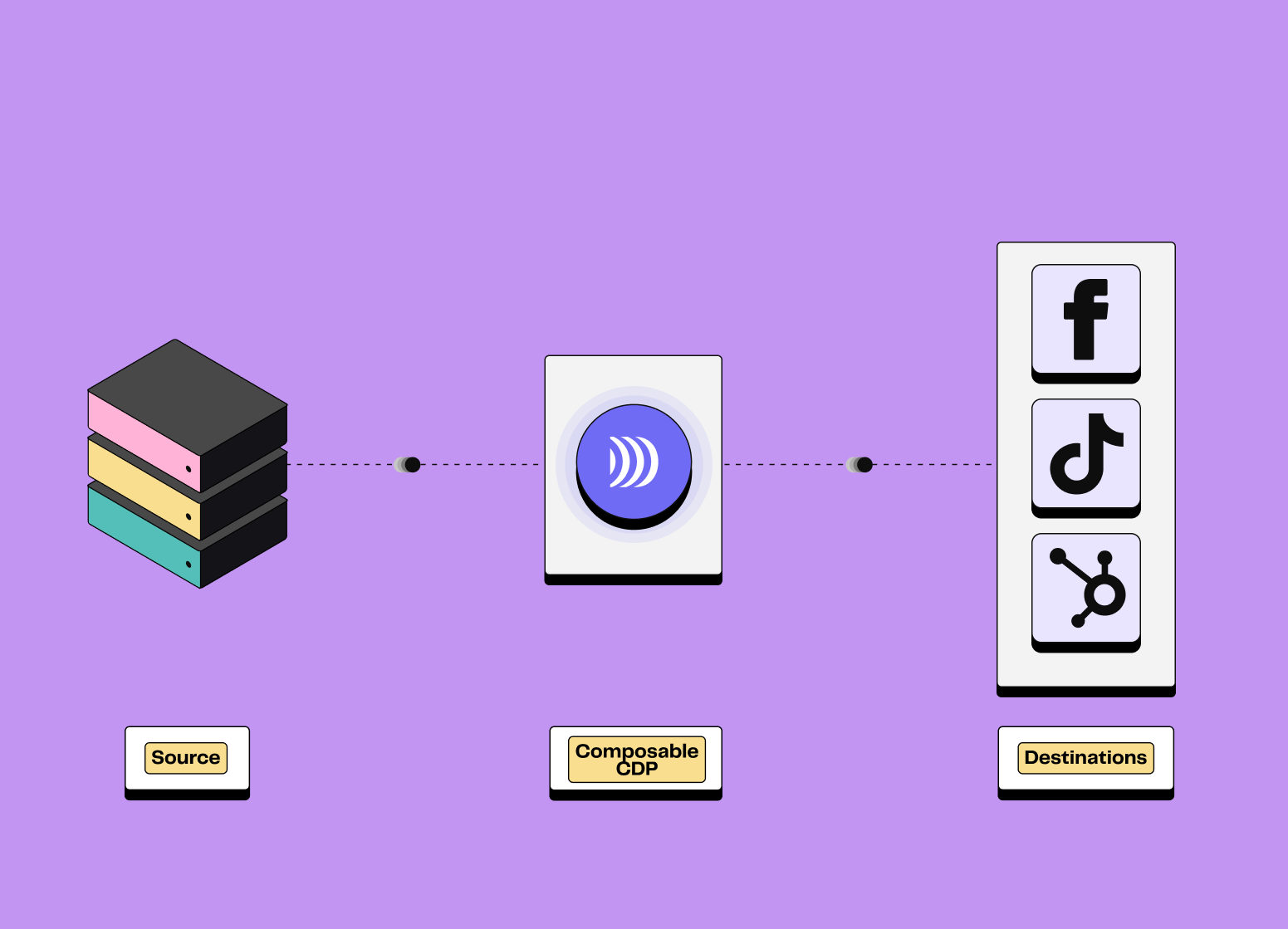
Comparison guide
Our One-pager highlighting the differences between Traditional CDP and Composable CDP
Composable vs packaged solution: what are the functional differences?
Components of a Customer Data Platform
Let's explore the main components of a CDP and how they are covered depending on whether it is integrated or composable.
The capabilities are chosen for illustrative purposes: not all publishers manage them in the same way. A CDP can perfectly well meet your needs without including all these components.
Schematically, a Customer Data Platform works as follows:
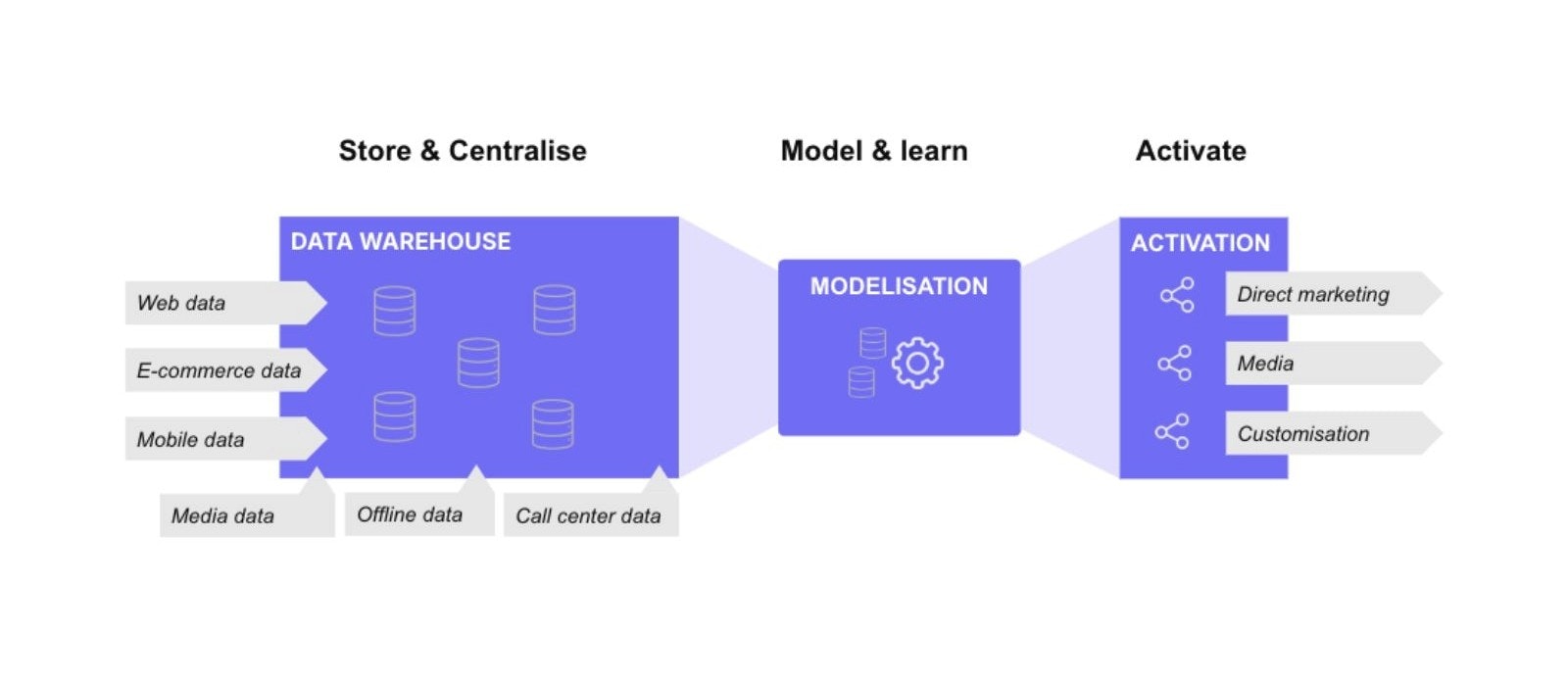
How a CDP works
Data Collection in Proprietary Tools
CDPs, whether packaged or composable, are necessarily based on customer data. It is therefore necessary to collect this data, which may come from various proprietary sources (CRM, application, website, shop, etc.).
In the case of a packaged CDP, the data collected from the various origins is stored directly within the CDP itself.
The Customer Data Infrastructure enables customer data to be sent directly to third-party platforms, without going through a data warehouse.
In the case of a Composable CDP, companies use a stand-alone Customer Data Infrastructure.
The data warehouse is the main destination for the data. A Reverse ETL tool must then be used, as there are fewer direct connections to third-party tools.
Traditional CDPs offer direct management of data gathering and transmission. Composable CDPs, on the other hand, offer greater flexibility and control by relying on your data warehouse.
Find out how Interflora used DinMo to connect its data warehouse to its marketing and advertising tools.
Integration of Third-party Data
Customer data can also come from third-party data sources, such as advertising, payment and support platforms. To collect and store the data in a database that can then be used by the CDP, it is essential to go through an ETL (Extract, Transform and Load) process.
In the case of an integrated CDP, the third-party data is first stored in its database (i.e. outside your company's data infrastructure). It can then be integrated into other proprietary destinations.
NB: if the destination is not supported by your CDP editor, you must create your own data pipeline.
In the case of a composable CDP, ETL solutions (such as Fivetran or Airbyte) are used to send the data from third-party platforms to the data warehouse.
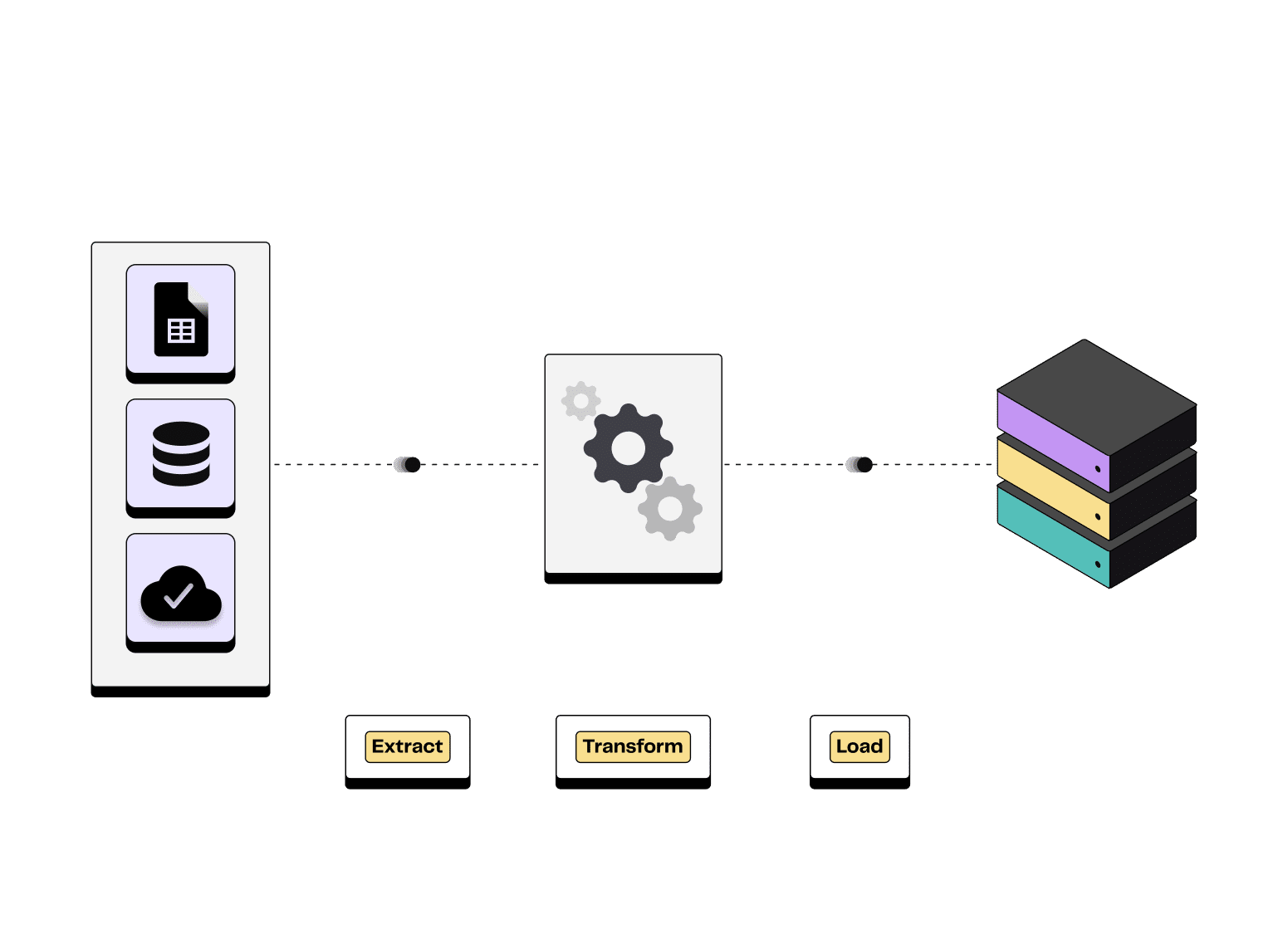
Extract Transform Load process illustration
Data Storage
Storage is a key feature, enabling trends to be analysed and segments to be created based on past actions.
In the case of integrated platforms, the data is stored in a database belonging to the publisher.
This involves copying and duplicating data that may already exist in your infrastructure. In a way, two ‘unique sources of truth’ are created.
In the case of modular CDPs, the data is stored in a data warehouse. The best-known players on the market are Google BigQuery, Snowflake and Amazon Redshift.
This is also known as zero-copy integration.
🏆 DinMo is the only European CDP that is Google Cloud BigQuery Ready!
Identity Resolution
This component unifies the various pieces of information collected on a customer from different sources, with the aim of creating a single profile. The result is a 360° view of the customer.
In the case of a Traditional CDP, identity resolution is done directly by the publisher, either using probabilistic or deterministic methods*.
💡 *Probabilistic Approach: uses statistical models to manage uncertainty and variability, predicting whether it is (or not) a unique person.
*Deterministic Approach: relies on fixed rules and relationships where each person is predictable with certainty.
With the modular approach, this identity resolution is carried out directly by the company.
This is done either via the work of an in-house data analyst using SQL joins, or via the identity resolution bricks of composable CDPs. In all cases, the result is stored in the company's data warehouse.
Audience Building
This is an essential CDP feature. It allows you to create audiences that will be shared with destinations. It is often based on a ‘Visual Builder’ that facilitates segmentation via simple ‘drag and drop’ actions.
In the case of a Traditional CDP, the "Visual Builder" is a full-fledged feature, based on the predefined 'Data Model'. However, these models are rigid, and users cannot build any type of object.
In the case of a Composable CDP, this functionality depends on the type of Reverse ETL chosen.
Some are only used as data pipelines. In these cases, audiences must be created by coding in SQL.
Conversely, other Reverse ETLs have added no-code Visual Builder functionalities, and are now referred to as data activation platforms.
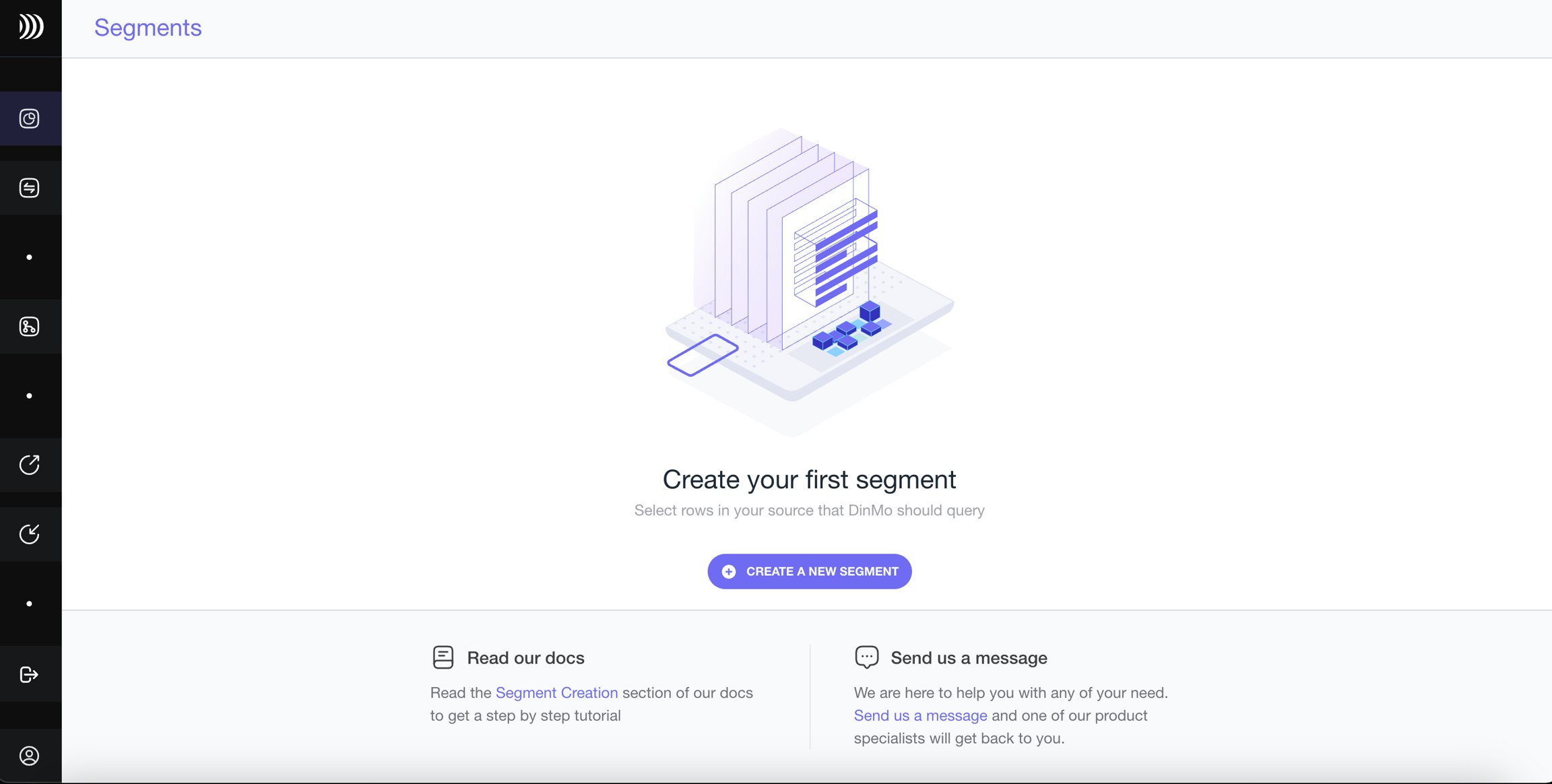
Create a segment on DinMo
Reverse ETL
This involves transferring data from a data warehouse to third-party destinations (advertising networks, CRM, support, etc.).
In the case of Traditional CDPs, this process, known as orchestration, consists of moving data from the CDP base to useful destinations.
In the case of Composable CDPs, this process relies on a Reverse ETL tool or a data activation tool.
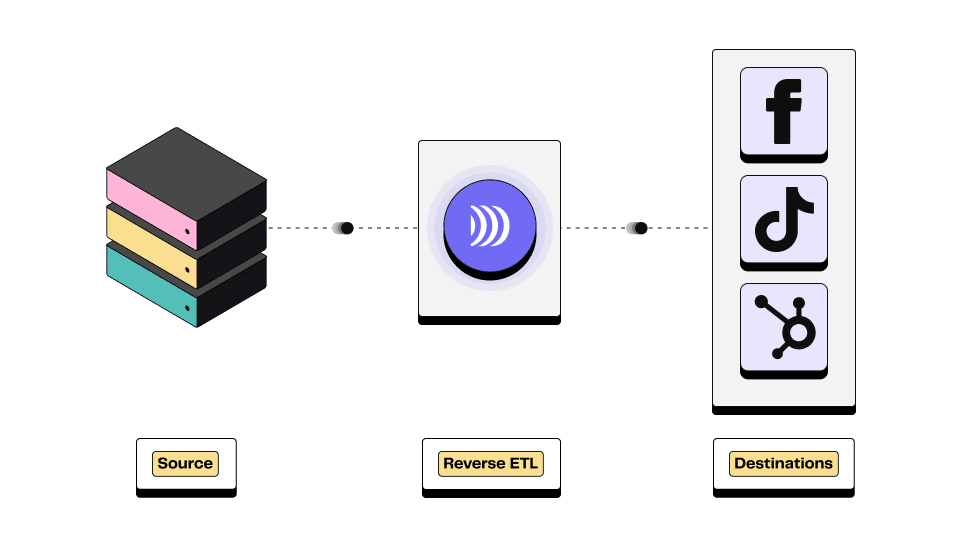
Illustration of Reverse ETL process
A Customer Data Platform may well offer other functional building blocks. The most common are ‘data quality’ (to ensure the consistency and accuracy of the data shared) and ‘governance’ (in particular to ensure compliance with privacy regulations).
With the emergence of Artificial Intelligence, CDPs now offer new functionalities: predictive segmentation and decision support. Thanks to its predictive attributes powered by AI, DinMo makes it possible to better anticipate customer behaviour to improve retention and optimise marketing campaigns.
The aim is to offer a personalised experience in real time. This is also known as the Customer Experience Platform (CXP), and xCDP (Experience CDP).
Which CDP should you choose based on your needs?
Before choosing between the two systems, it is essential to assess your company's specific needs.
Criteria | Traditional CDP | Composable CDP |
|---|---|---|
Structure | Pre-configured monolithic platform | Modular, unbundled |
Prerequisites | Turnkey offer | Requires a data team and a data warehouse |
Flexibility | Limited, predefined functionalities | Highly flexible, modules tailored to needs |
Customisation | Less customisable | Fully customisable |
Data storage | Stored in the CDP database (duplication) | Stored in a data warehouse |
Sending data | Directly to third-party tools | Via Reverse ETL or activation tools |
Initial cost | High | Variable, depending on the modules chosen |
Implementation time | Long (several months) | Short (a few hours to a few days) |
Adaptability to change | Adaptability to change | Low adaptability to change |
Key comparison criteria
If you're looking for a turnkey solution and don't have a data team dedicated to building your stack, the packaged CDP may be an option. More rigid, it is also more expensive and more cumbersome to deploy.
Conversely, for advanced needs and a fully customisable and scalable architecture, composable CDP is likely to be a better option.
Evaluate your current tools, resources and objectives to choose a solution tailored to your current and future needs.
Consult customer data management experts to get personalised advice and make the best decision for your business. Do not hesitate to reach out to our best partners in crime, and in particular Cartelis, a consulting firm specialising (among other areas) in invitations to tender for CDPs!
🌟 Feel free to contact us if you want to learn more about our approach to Composable CDPs.
FAQ
What is the main difference between integrated CDPs and composable CDPs?
What is the main difference between integrated CDPs and composable CDPs?
An integrated CDP is an all-in-one solution, with predefined and integrated functionalities. It offers companies a ready-to-use solution.
In contrast, a composable CDP is based on independent modules. It uses the company's data warehouse to centralise information, while a packaged CDP stores data in its own database.
By integrating with the company's existing data stack, it offers flexibility and customisation.
How long does it take to implement a CDP?
How long does it take to implement a CDP?
A composable CDP can be set up in a matter of days, depending on specific requirements and the tools chosen.
This is significantly faster than an integrated CDP, which can take several months or even a year to implement.
This shorter timeframe also means that Customer Data Platforms can be used by a greater number of companies than in the past.
Is a composable CDP more cost-effective than a packaged CDP?
Is a composable CDP more cost-effective than a packaged CDP?
This depends on the modules selected. The architecture can be tailored to the company's needs, making it potentially more cost-effective.
In essence, a packaged CDP is less customisable. It often has a high initial cost, because it includes all the functionalities, even those that your teams don't need.



















